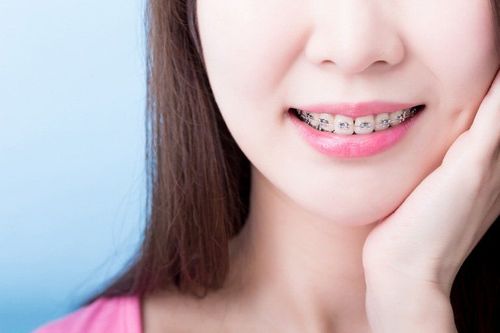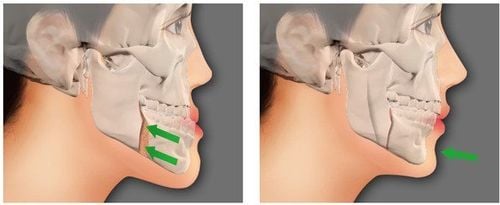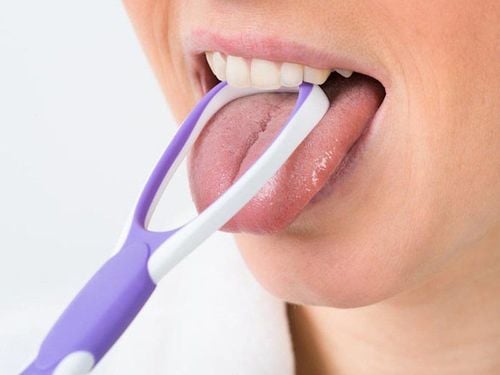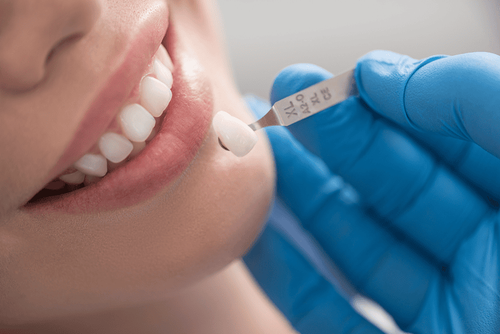This is an automatically translated article.
A less beautiful gummy smile makes you self-deprecating, greatly affecting aesthetics and psychology when communicating. Gum surgery (gum resection) is an effective method to improve the condition of a gummy smile. However, many people are still concerned about “Is gum surgery safe?” The following article will help you answer this question.
1. What is gum surgery?
Gum surgery is a dental procedure to remove part of the gum tissue, gum tissue that is clinging to the crown of the tooth. This is a technique commonly used to remove infected or excess gums that cause gummy smiles and a number of other purposes.
The doctor will perform a dissection of the excess gums, adjusting the crown to expose more. The procedure will be performed right in the oral cavity, the contour is stitched by cosmetic thread, so there will be no scars.
This is a fairly simple procedure, very minimally invasive, so it is quite safe. During the procedure, the patient will be anesthetized, so there is almost no pain. After surgery, the doctor will prescribe pain relievers according to the dose. You can still eat and drink as usual after 1 week.
2. Cases in which gingival surgery should be performed
This method is indicated for the following cases:
Surgical removal of inflamed gums:
For patients with severe gingivitis that cannot be cured by other methods, it is imperative to use gingivitis. After removing the patient's inflamed gums, the doctor will be more convenient in treating diseases or killing bacteria that are clinging to the roots of the teeth.
Surgery to remove gingivitis due to tumor:
For patients with enlarged tumors, the best option is gingivectomy. Because this condition occurs due to bacteria attack causing irritation at a fast rate.
Usually, taking medicine only helps to relieve pain and sensitivity temporarily, but not completely. In this case, surgery is the best option.
Gum surgery to remove excess gums, gums covering teeth:
Currently, there are many people suffering from gingivitis, gums that cover the crowns of teeth. This makes the process of eating and living everyday not convenient. Patients are more likely to bite into gum tissue, causing damage, bleeding, and infection.
This phenomenon is quite common with people who are teething. A part of the gums covers the entire surface of the teeth, making them unable to develop normally, causing many uncomfortable symptoms.
In these cases, gingivectomy will be consulted and used. If necessary, the wisdom tooth can be removed.
Gum surgery to treat gum disease:
Gum surgery is one of the most popular ways to treat gummy smiles. The excess gum that is covering the crown of the tooth will be calculated and removed by the doctor.
After cutting the excess gums, the roots will be exposed and the gums will be pushed higher. So every time you smile, it will not create a gummy smile anymore.
Depending on the client's condition, the doctor will offer the most effective treatment plan: cutting gums, can combine lowering the upper lip to cover exposed gums, porcelain crown,...
3. Is gum surgery safe?
Does cutting gums affect health?
Before proceeding to cut gums, you will be examined, have a general health check to make sure your body is completely suitable for this minor surgery. If your health does not respond, the doctor will refuse to perform. In addition, if you are suffering from dental diseases, these diseases will be completely treated before cutting gums. Minor surgery is simple and safe, so it has absolutely no adverse effects on health. However, you should also choose a reputable dental facility so that the gum cutting process is most effective and absolutely safe.
Does cutting gums affect the ability to eat and chew?
As mentioned above, cutting gums is a cosmetic method that directly affects your gums, so it will definitely cause a bit of trouble for chewing in a short time. Eating is only difficult for 5-7 days after cutting gums, after that time, chewing activities will gradually recover and become normal.
Does cutting gums (gum) hurt?
Gum surgery is a small surgery in dentistry, not invasive to the tooth structure. Therefore, they are very safe for patients, with very few dangerous complications.
During the procedure, the doctor will administer anesthesia or anaesthesia. Therefore, the patient almost no longer feels pain. After surgery, when the anesthetic wears off, you will only feel a little numb. Painkillers prescribed by your doctor will help you feel more comfortable. In addition, the gingival cutting procedure is done in the oral cavity, the gum line is stitched with cosmetic threads, so it absolutely does not leave bad scars or any traces.
4. Gum surgery procedure
Step 1: Examination and consultation The first step, the doctor will general check your entire oral condition. If you are suffering from some dental disease, the doctor will conduct thorough treatment of this disease for you first. Next, the doctor will plan the number of teeth to cut gums and the appropriate cutting ratio for you.
Step 2: Cleaning the oral cavity and administering anesthesia The hygiene of the oral cavity is extremely necessary to ensure safety during the gum cutting process. So the doctor will clean your oral cavity thoroughly with manipulations such as removing tartar, plaque, flushing...etc. After the oral cavity is clean, the next step is anesthesia.
Step 3: Conduct gingival cutting Based on the determined ratio, the doctor will conduct the gingival cutting procedure. During this procedure, you will not feel any pain or discomfort because of the anesthetic.
Step 4: Finalize and schedule a follow-up appointment After successfully cutting the gums, the doctor will clean and disinfect your oral cavity again. You will be able to lie down for a while and listen to the doctor's instructions on how to take care of your teeth and diet after minor surgery. A week after gum removal you need to return for a follow-up examination.
5. Recovery after gingivectomy
Recovery time after gingivectomy depends mainly on the condition of each patient. In case of gummy smile stemming from the overgrowth of the gums, the doctor will numb the gums and cut the gums quickly and gently. About a week later, the wound will heal and you can eat and drink as usual.
In case a gummy smile is caused by an overgrown jawbone that causes the gum area to protrude and be pushed out (jaw protrusion), you must perform alveolar grinding surgery with gingival cutting. You can eat and drink normally after 10 days.
Normally, after 5-7 days after gummy smile treatment, the swelling will be gone, 3-6 months will be completely recovered and stable. During the recovery period, you can resume your normal activities, but you should limit too much impact on the upper jaw area.
6. Dental care after gum surgery
After surgery, the gums will be fixed to the root with strong dental floss. This is very important for hemostasis and later aesthetics. To keep the results as expected, you need to note the following:
Absolutely do not brush your teeth for the first 3 days. You should only rinse your mouth lightly on the 2nd day when the bleeding has stopped completely. The brine used must be diluted brine. Because salt water is too thick, it can cause bleeding in the surgical area and greatly affect the speed of wound healing. The first day does not need to rinse the mouth to avoid the risk of blood clots. Do not eat hard, tough or sharp things to stabilize the only important nodes Limit touching the wound for the first few days. Your activities can return to relatively normal as soon as day 3. After 2-3 weeks, you will have the stitches removed and eat and drink completely normal.
Care instructions after cutting gums:
In order for the wound to heal quickly, the patient needs to have special care and diet notes after cutting the gums (gum). Besides, you should pay attention to supplement the necessary nutrients. Take anti-inflammatory and anti-edematous antibiotics for 5-7 days as directed by your doctor. Avoid eating spicy, hot and acidic foods because they will cause irritation, causing the surgical area to become inflamed. Supplement foods rich in vitamins and minerals to help wounds heal quickly such as yogurt, green vegetables, fresh fruits, oatmeal,... Abstain from using stimulants such as tobacco, alcohol, coffee ,... Proper oral hygiene. You should stop using your toothbrush for the first few days as directed by your doctor. After brushing gently, avoid pressing hard on the gums that can cause burning pain. Visit and check periodically according to the doctor's appointment to monitor salary traces. Consulting treatment of cleft palate at the Department of Odonto-Stomatology of Vinmec International General Hospital, patients will realize the outstanding advantages only available at Vinmec. With a team of highly qualified and experienced dentists, with the support of a system of modern medical equipment, patients treat cleft palate painlessly, leaving no scars, thoroughly solving the problem. gingivitis. Especially safe and without the risk of causing complications for the patient. Treatment of gingivitis at Vinmec takes only 1-2 hours and will quickly recover.
Please dial HOTLINE for more information or register for an appointment HERE. Download MyVinmec app to make appointments faster and to manage your bookings easily.













